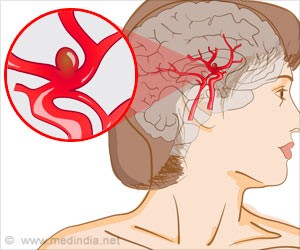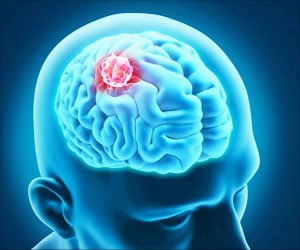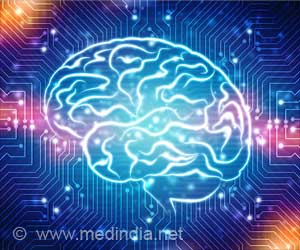Cerebral aneurysms that can be overlooked during routine radiological assessment can be detected using deep learning algorithms that use artificial intelligence.

‘Deep learning using artificial intelligence has tremendous potential in detecting cerebral aneurysms that can be overlooked during a routine assessment due to their small size or complexity of blood vessels.’
Read More..




CT angiography is usually used to detect aneurysms. Aneurysms which are smaller in size can be overlooked during initial assessment using CT angiography.Read More..
"In our daily work we are always faced with cases in which some important lesions have been missed by the human eye," said study senior author Xi Long, Ph.D., from the Department of Radiology at Tongji Medical College's Union Hospital in Wuhan, China. "Cerebral aneurysms are among those small lesions that may be overlooked on the routine assessment of radiological images."
The deep learning system is trained on existing images of cerebral aneurysms. It learns to recognize the abnormalities that is not easily visible to a human observer. Deep learning has been used in the detection of tuberculosis on chest x-rays.
For the recent study, a fully automated and highly sensitive algorithm was used for the detection of cerebral aneurysms on CT angiography images.
Researchers used CT angiograms from more than 500 patients to train the deep learning system, and then they tested it on another 534 CT angiograms that included 649 aneurysms.
Advertisement
Deep learning assistance helped to enhance radiologists' performance.
Advertisement
Deep-learning algorithm can be used as a supportive tool for the second opinion while detecting aneurysms .
Some disadvantages of the deep learning system can be that it may miss very small aneurysms or those aneurysms located close to similar density structures like bones. It also delivers from false-positive results, where it wrongly identifies structures that are similar to aneurysms as aneurysms.
The deep-learning system is intended to assist physicians and not as a replacement to their work.
"At this time, the role of this deep-learning system, which has been trained to recognize aneurysms, is to give suggestions to the human reader to improve their performance and reduce mistakes," Dr. Long said."The combined work of the human reader and computer system improves the diagnostic accuracy for the patient's sake."
Source-Medindia














